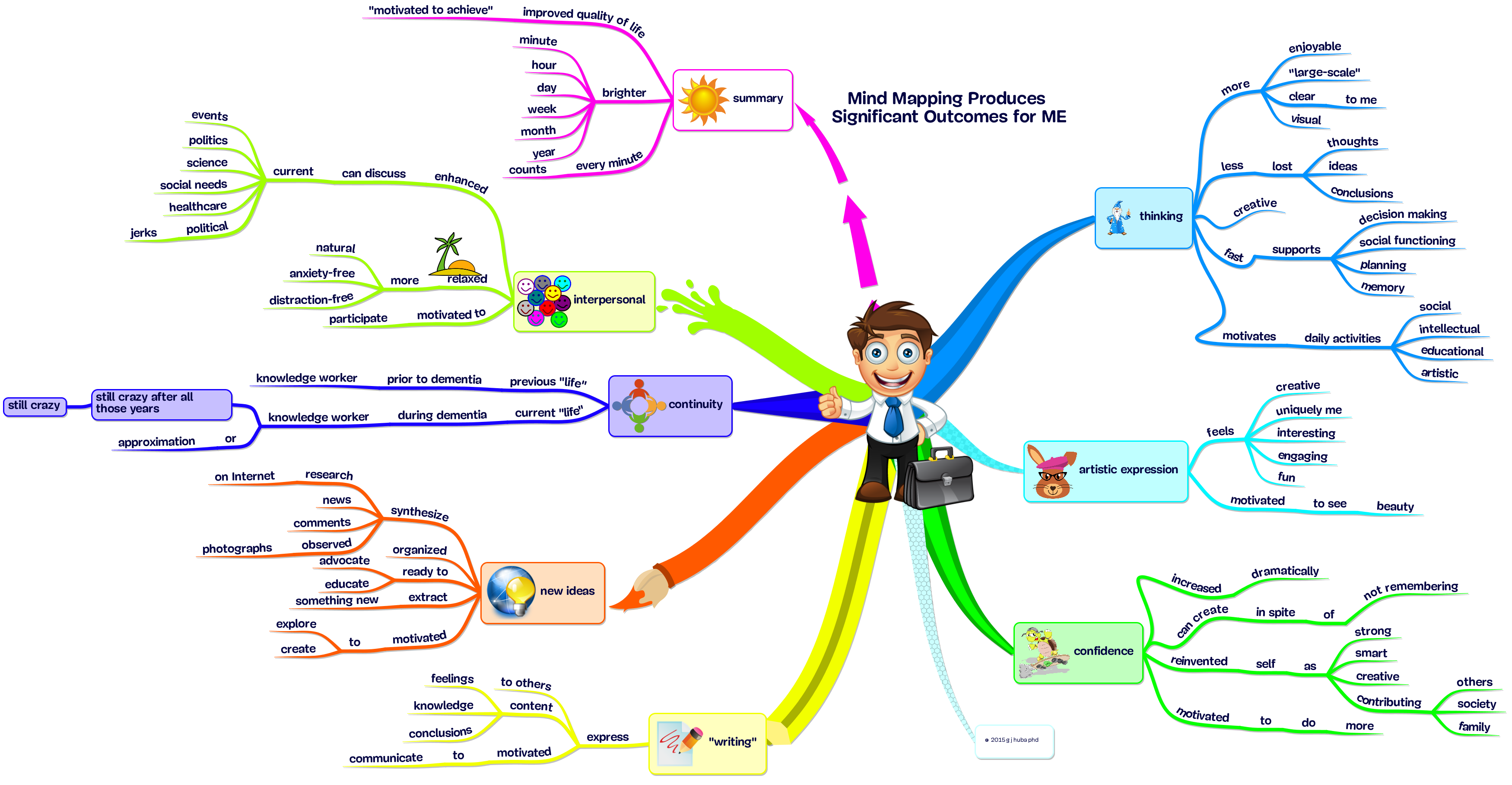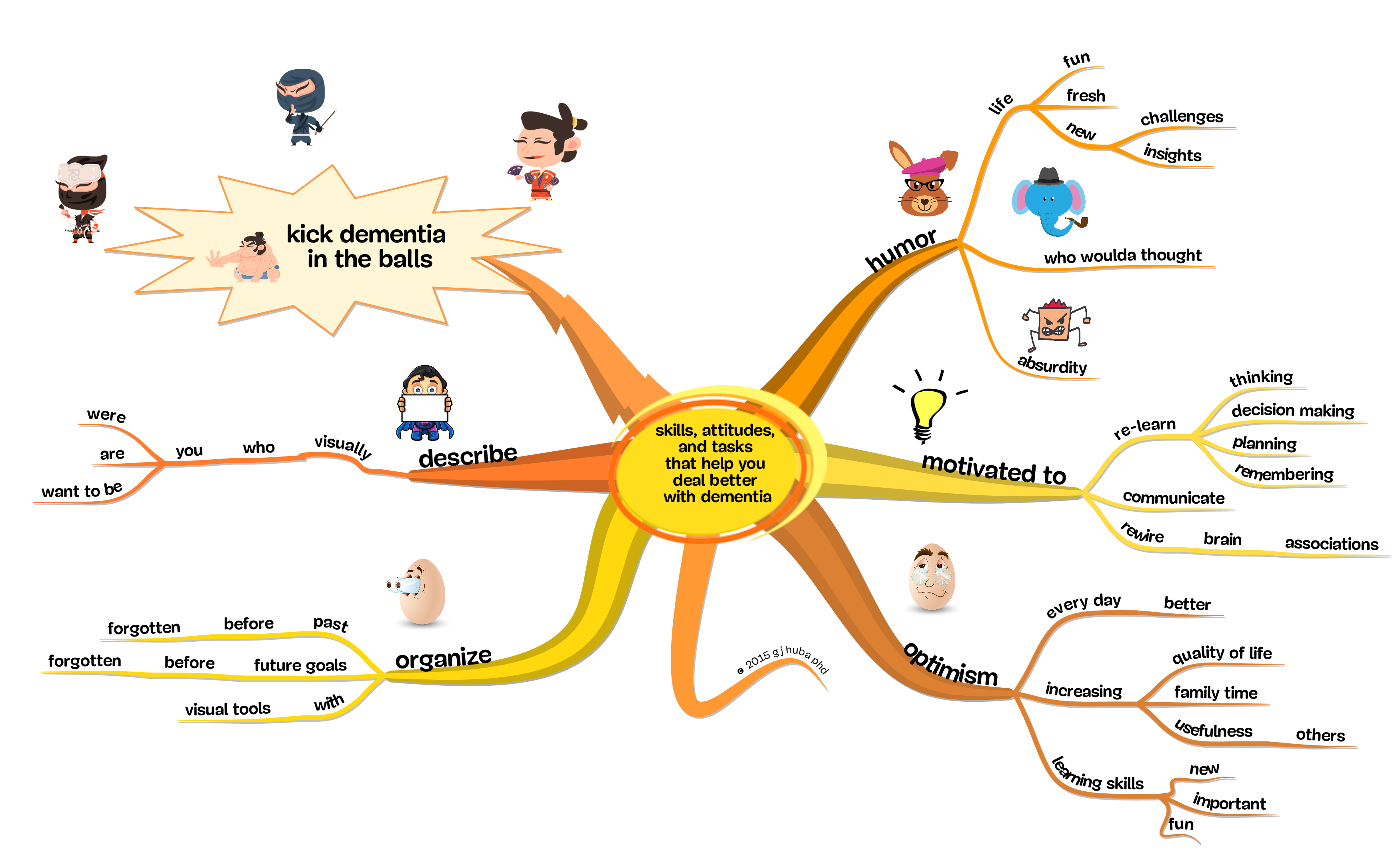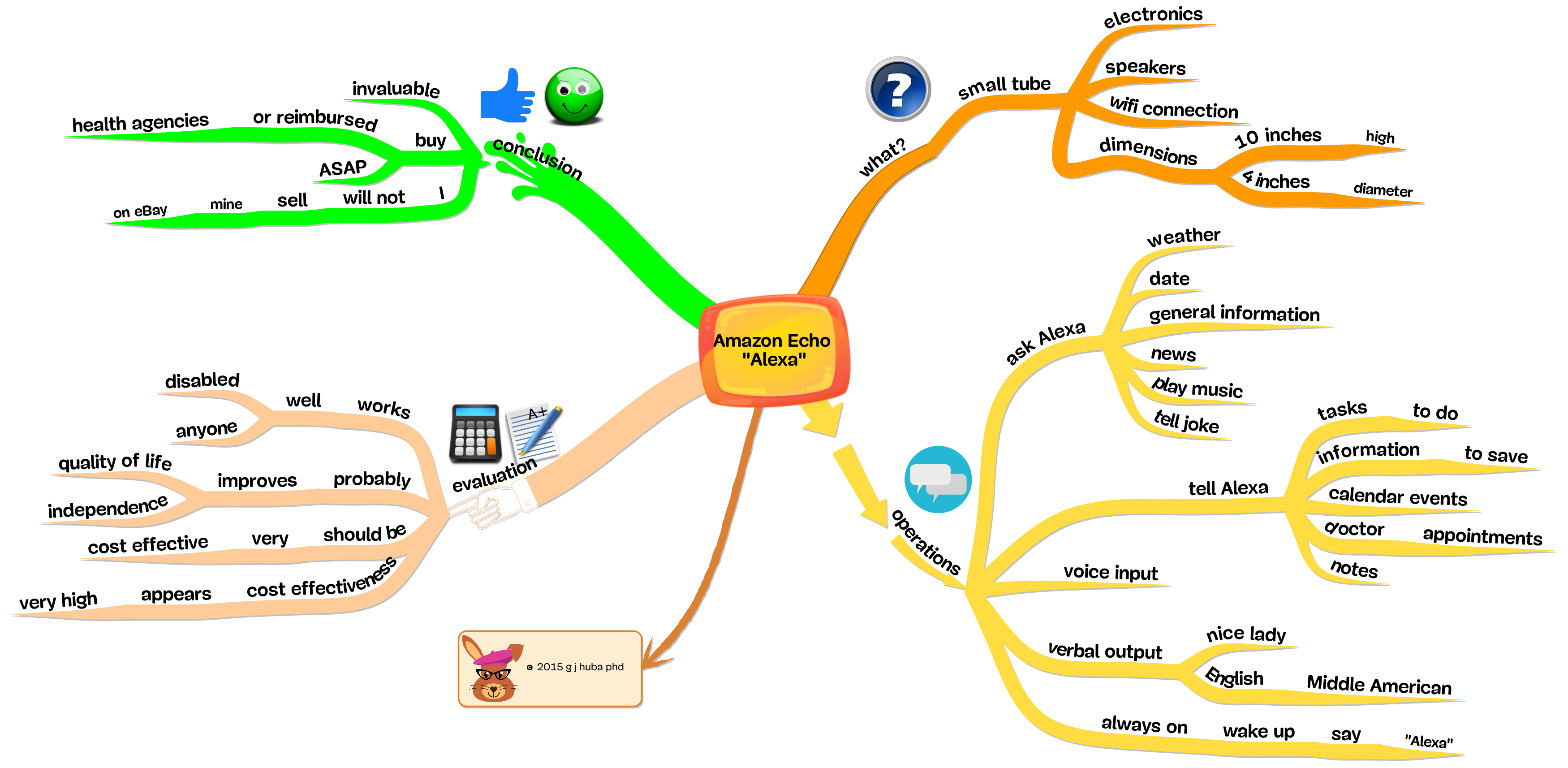This is the ninth installment of a series of posts in which I record videos of making mind maps from scratch. The other blog posts are reached through these links.
PWD = Person with Dementia, a common acronym for those who have the symptoms of dementia, no matter which specific neurodegenerative disease causes them.
This was a very hard mind map for me to develop. At least in my case there are three types of memory loss (one of which a caregiver might not actually think of as memory loss) which I deal with daily.
The first part of the mind map took me 40:20 in real time to do. The video of that stage is given below. As with my other mapping videos, this one uses time-lapse to compress 8 minutes into 1.
I walked away from the computer and did not continue until about 22 hours later. The second part of the mind map took me 30:40 minutes to develop. So, the entire mind map took me 71 minutes to complete. I have had maps that have taken me much longer to develop than this one, although lately I have gotten much faster and this process was slower than most in the last 3 months. I attribute it to trying to map a clear statement of something not identified in the mind map literature.
The final version of the map is shown statically below. I corrected 2 typographic errors I found while converting this to a standard image.
For those who prefer a verbal summary I propose three types of “memory loss” that I experience.
Type I: What most observers consider “memory loss.” Knowledge and mental records disappear completely or are not reliably retrieved as in when I mistakenly call my children by each other’s names or use functional words (grass cutter for lawn mower).
Type 2: Delayed retrieval. This is a recurring problem for me on verbal questions from others. I say that I know the answer but it may not come back to me for 9 seconds or 90 seconds or 90 minutes. Has a huge impact on conversation!
Type 3: Forget how to start. I may know that I am supposed to get up and take a pill or take the garbage out or many other sequential tasks. I know that too, at least on a part time basis. But a very short time after thinking about the task I forget to start. This is not entirely an attention issue, although it is partially so. Primarily it is a problem of performing a sequence of tasks, any of which might be forgotten. Others may easily interpret this problem as one of refusing to take the garbage out or delay or just plain laziness or being engaged in watching a sports events on TV. I experience this as a memory issue in which I forget to start a chain of behaviors or how to perform one part way through the chain. Definitely “gets me in trouble.”
As a note, I can deal with intellectual “chains” (Type 3) pretty well with mind maps. The key feature is that mind maps need not be “written” in a linear form, but rather you can jump from task-to-task or idea-to-idea. Most experienced advanced mind mappers do not think linearly while they are mapping nor do groups using mapping for brainstorming or other group tasks.





























